
KO Architecture has designed this visually striking, cedar-clad family home that is located in Seattle, Washington. When it came time to build a house, this Seattle couple knew they wanted a simple yet flexible design that would support their family now (they have a daughter who is still in school) as well as in their retirement years. The challenge was how to satisfy their quality of space needs while tackling the daunting task of building on a budget.
The solution focused on four key areas, each reflecting the fundamental way the clients wanted to live and responding to the environmental conditions of the Pacific Northwest. These included: a south-facing courtyard, the equal importance of interior and exterior spaces, a preference for diffuse and indirect light, and a desire for elemental forms that emphasize sequences of space. Project constraints led to a minimalist aesthetic characterized by simple forms and an emphasis on maximizing every space.
DESIGN DETAILS: ARCHITECTURE KO Architecture STRUCTURAL BTL Engineering SURVEYOR DOWL HKM CONTRACTOR NRC Homes

The site is flat and optimally suited for southern exposure. The 2,450-square-foot house is composed of three simple volumes; a long rectangular, two-story, gable-roofed structure on the north side of the property, and two small one-story structures—one holds the combined kitchen and dining, the other is a storage shed—that bookend the southern edge of the site.
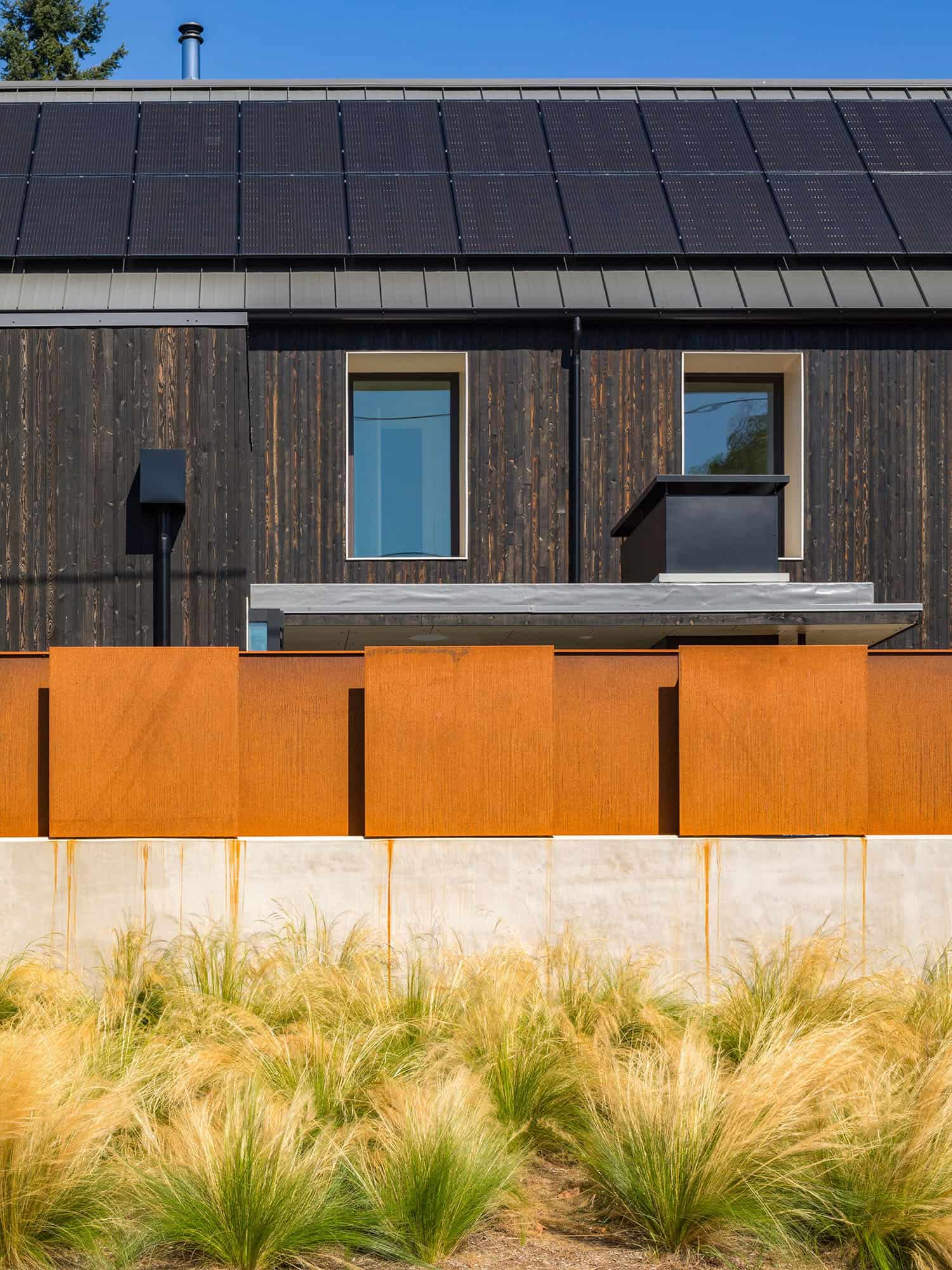
The resulting open space between the structures unites structures. From the street, a forecourt adds distinction to the house. In keeping with the minimalist concept, a yin-yang composition of materials was selected. Exterior wood is finished with natural black pine tar to create a rough-textured finish while inside, smooth, white-painted walls and panels dominate to keep the interiors bright and cheery on even the darkest Seattle days. Accents of Corten steel, balances out the principal materials.
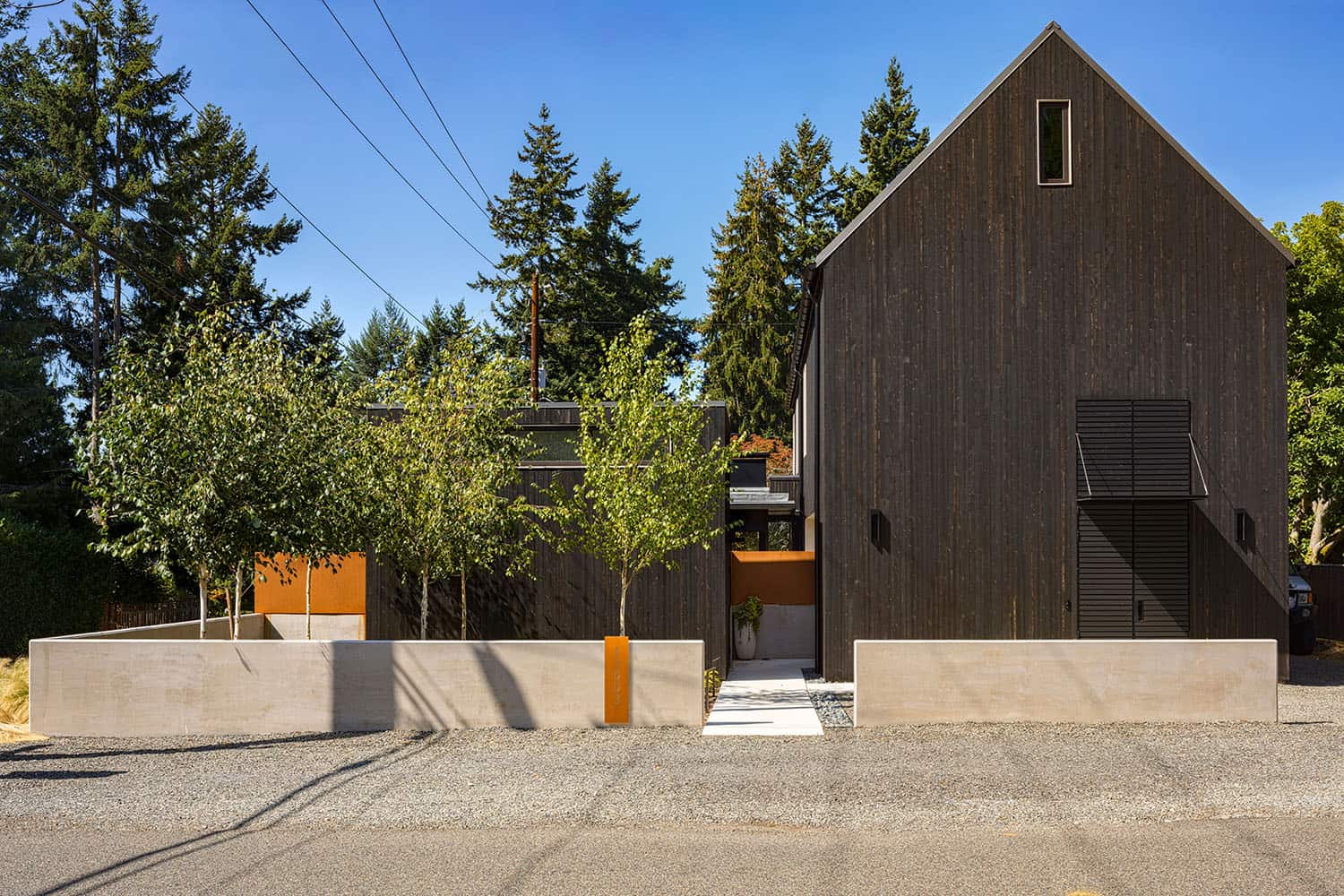
The home’s entry is located in the gap between the one-story storage structure and the two-story volume. The path, which features several turns and glimpses of the interior courtyard, eventually brings visitors to the front door. Inside, the family room doubles as a theater room with acoustical treatments and a built-in sound system for watching movies.

Dual-purpose rooms are the norm, with the guest room doubling as a workout room while in another area, a walnut-and-glass sliding wall system opens to create two craft rooms. The kitchen and dining area is pavilion-like, with a roof plain that appears to float above the space and concealed connections and lighting to reinforce the illusion. Folding windows open the kitchen to the private courtyard which features a sitting area and a kitchen garden.
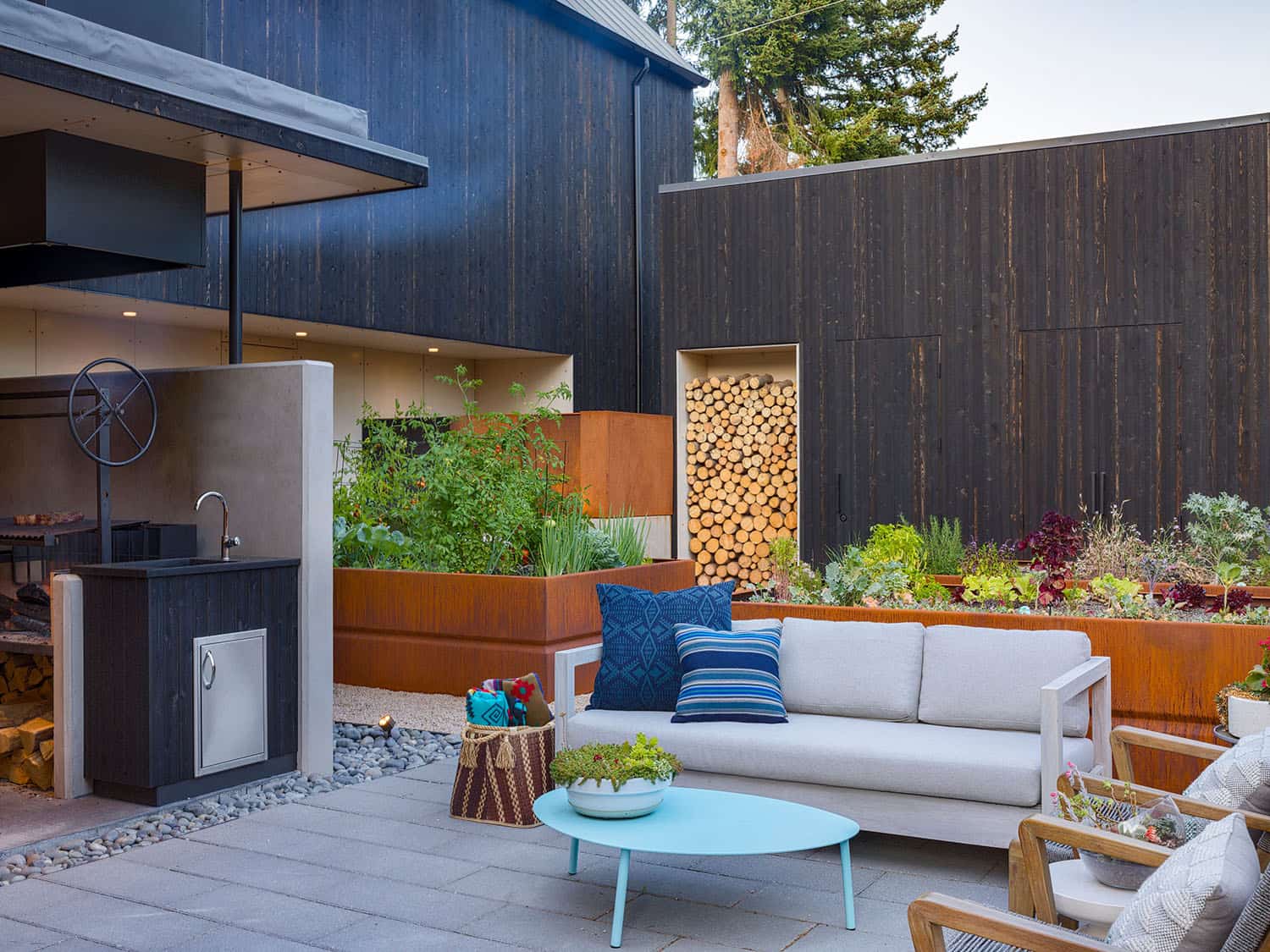
Features such as wide doorways and a roll-in shower for wheelchair access help future-proof the house. An 800-square-foot flex space, currently used as a photography studio, is capable of transforming into an Accessory Dwelling Unit (ADU) for additional income.
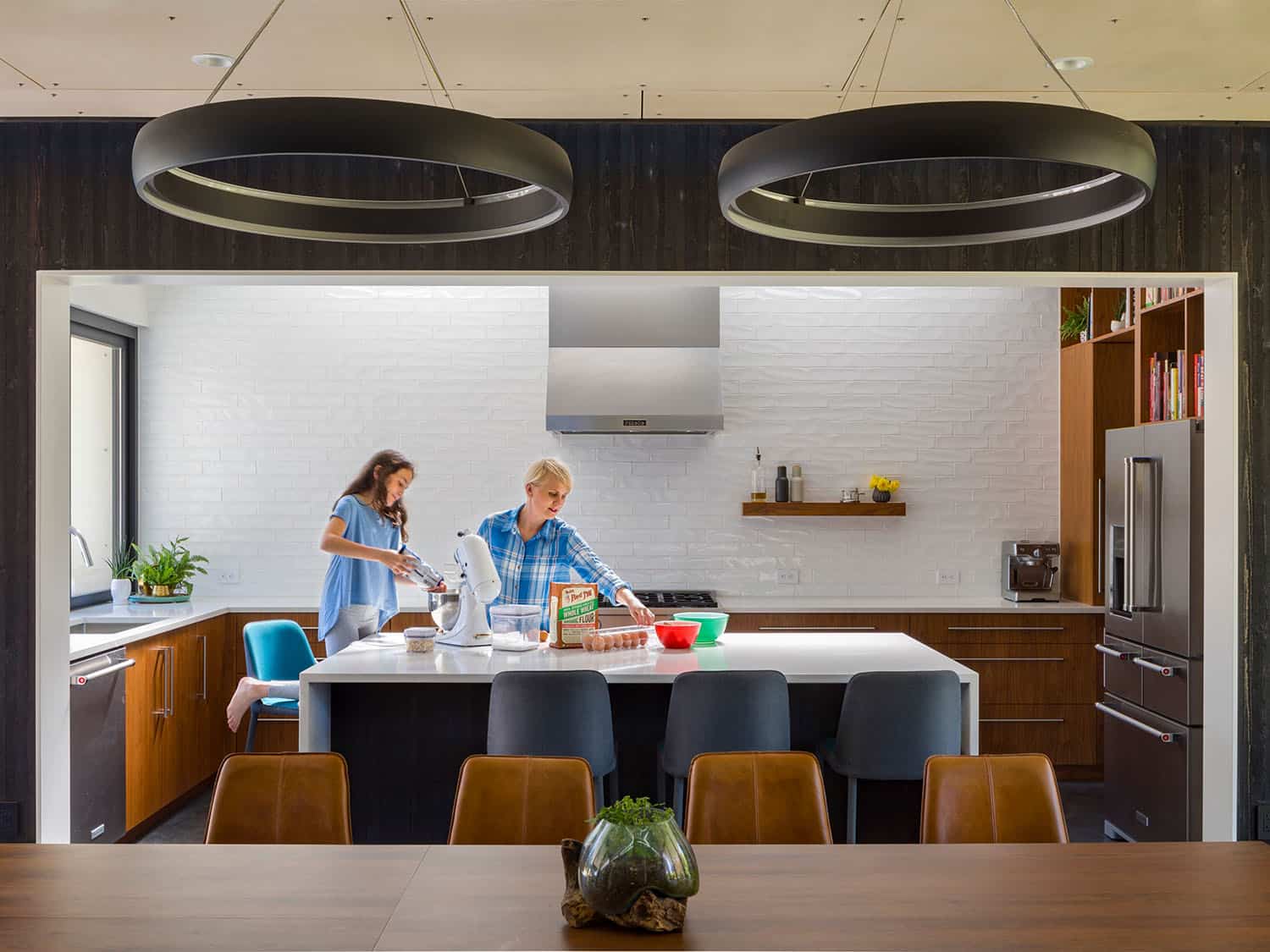
Windows, including a liberal use of clerestories to ensure indirect or diffused light, are fitted with Low-E glazing to maximize natural light and minimize energy loss. Atop the roof is a 9 kW PV system that produces 60% of the home’s electricity. Materials throughout were selected for their low impact and long-lasting durability.

What We Love: This home beautifully blends minimalist design with flexible, multi-purpose living spaces that evolve with the family’s needs. We love the seamless connection between indoors and out, highlighted by a sun-filled south-facing courtyard and a pavilion-like kitchen that opens to a garden. Thoughtful touches—like clerestory windows, floating rooflines, and accessible design elements—make this house both timeless and livable for years to come.
Tell Us: What details in the design of this Seattle home do you find most appealing? Let us know in the Comments below!
Note: Be sure to check out a couple of other incredible home tours that we have showcased here on One Kindesign in the state of Washington: A small rural retreat inspired by nature on the Hood Canal, Washington and This black cabin in the San Juan Islands takes shelter in the woods.
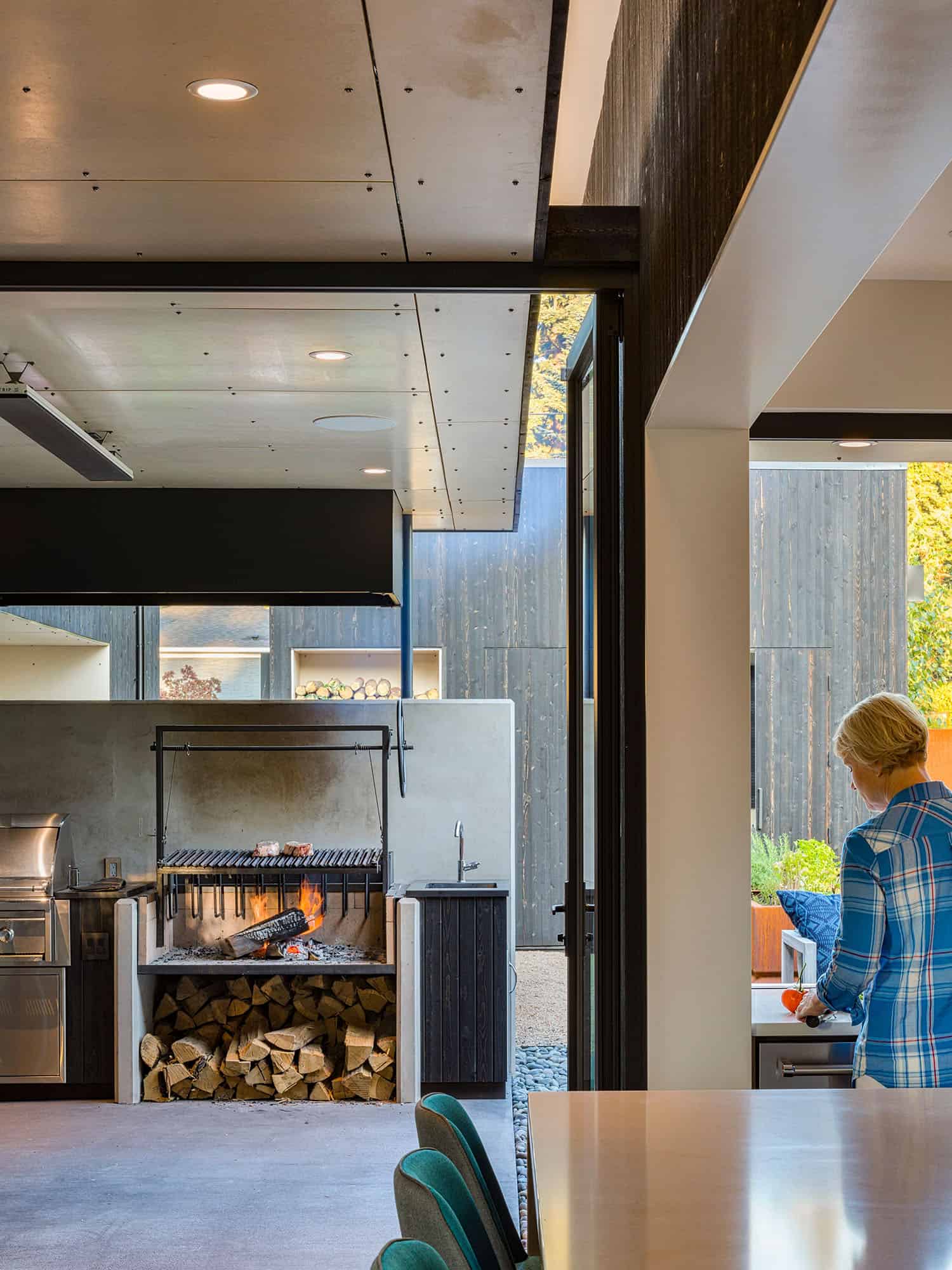
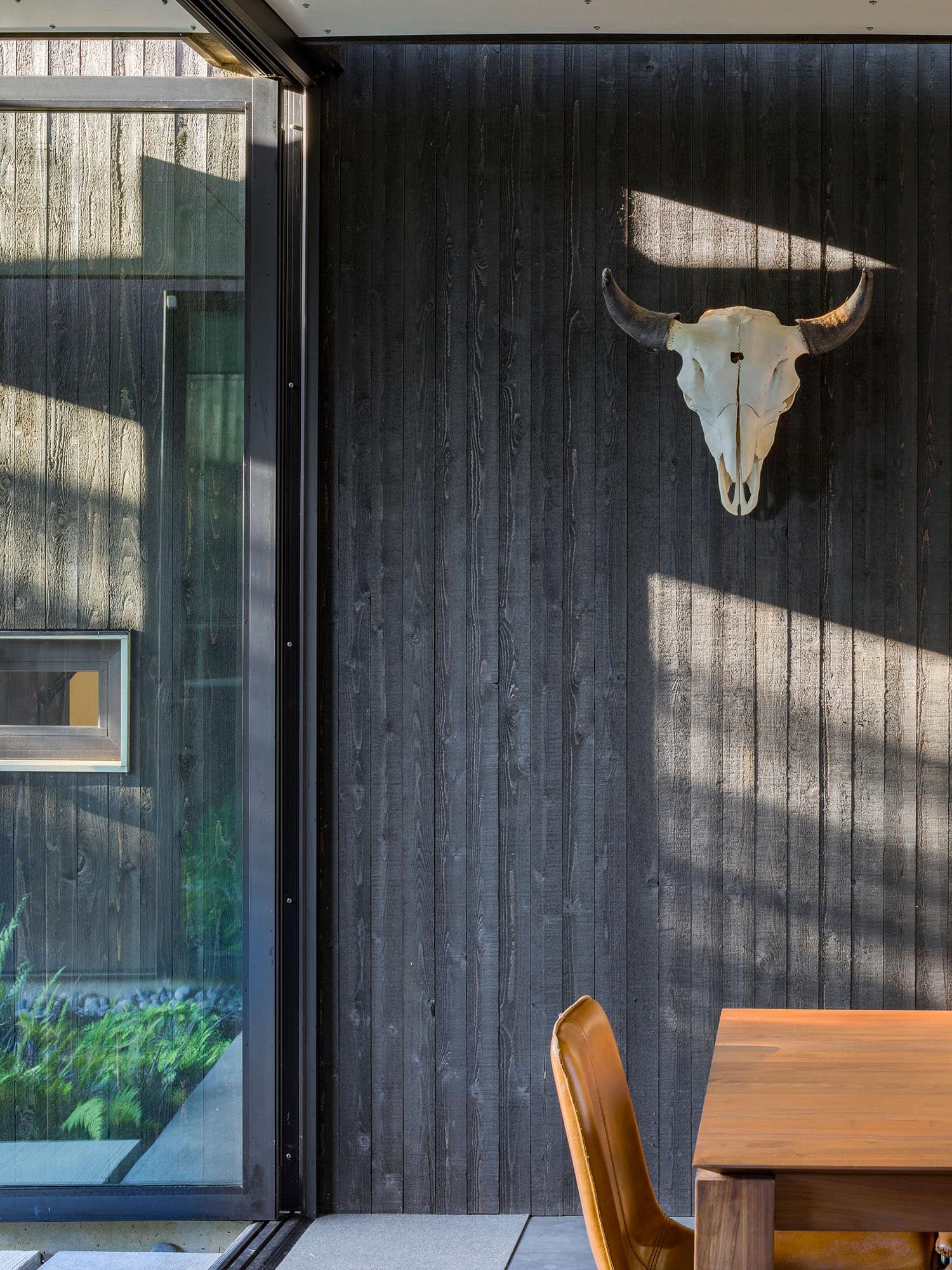

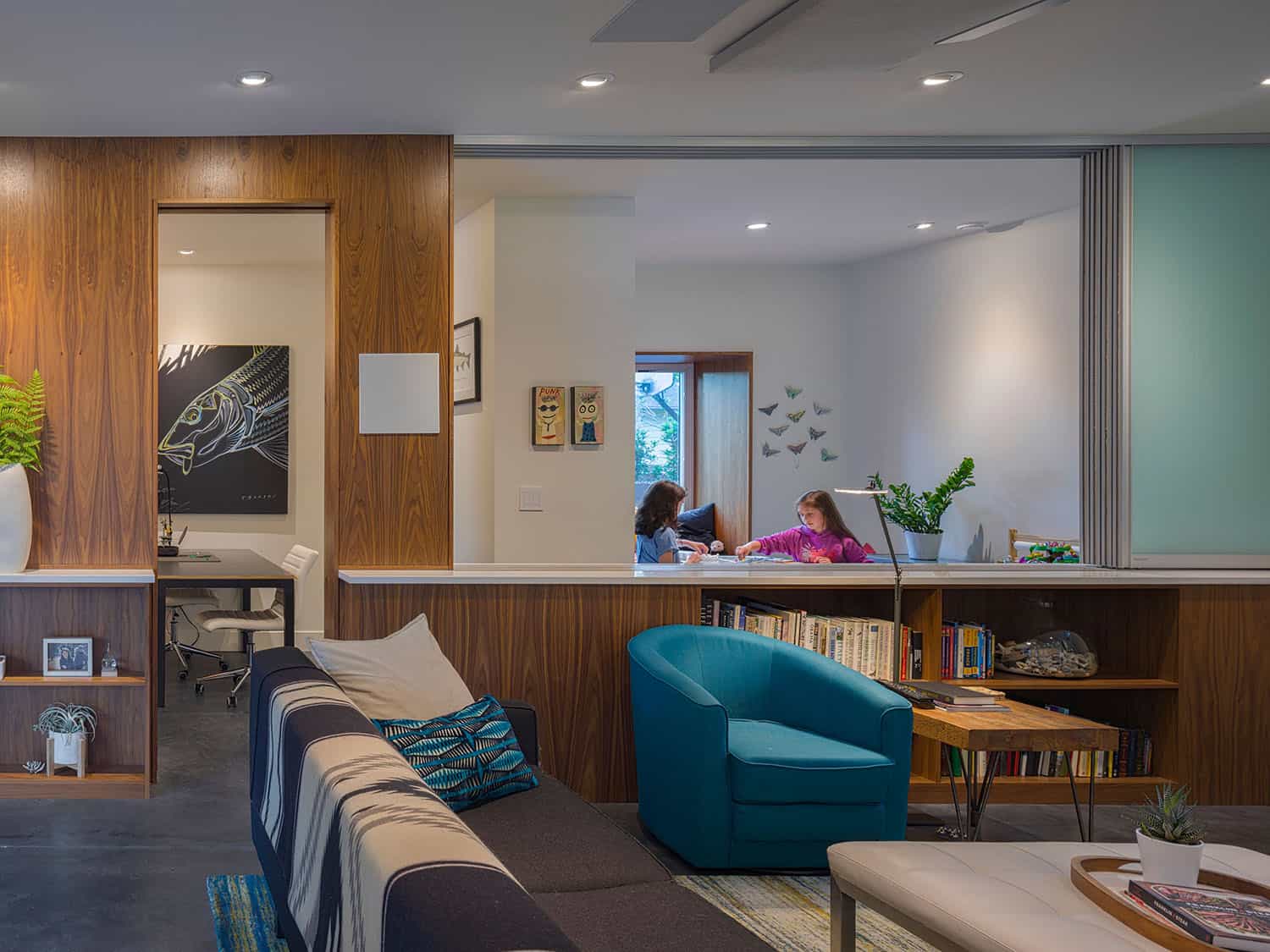

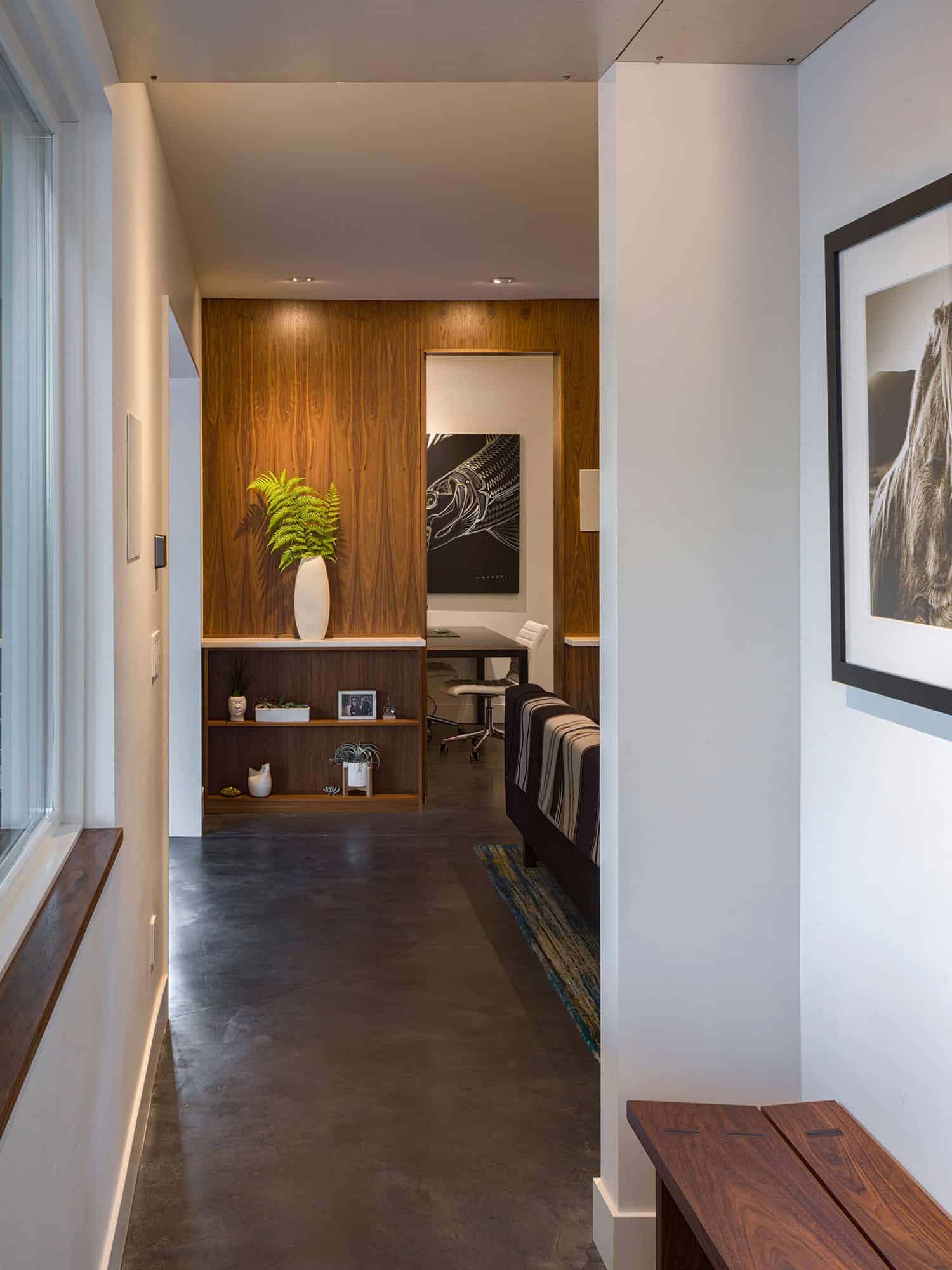
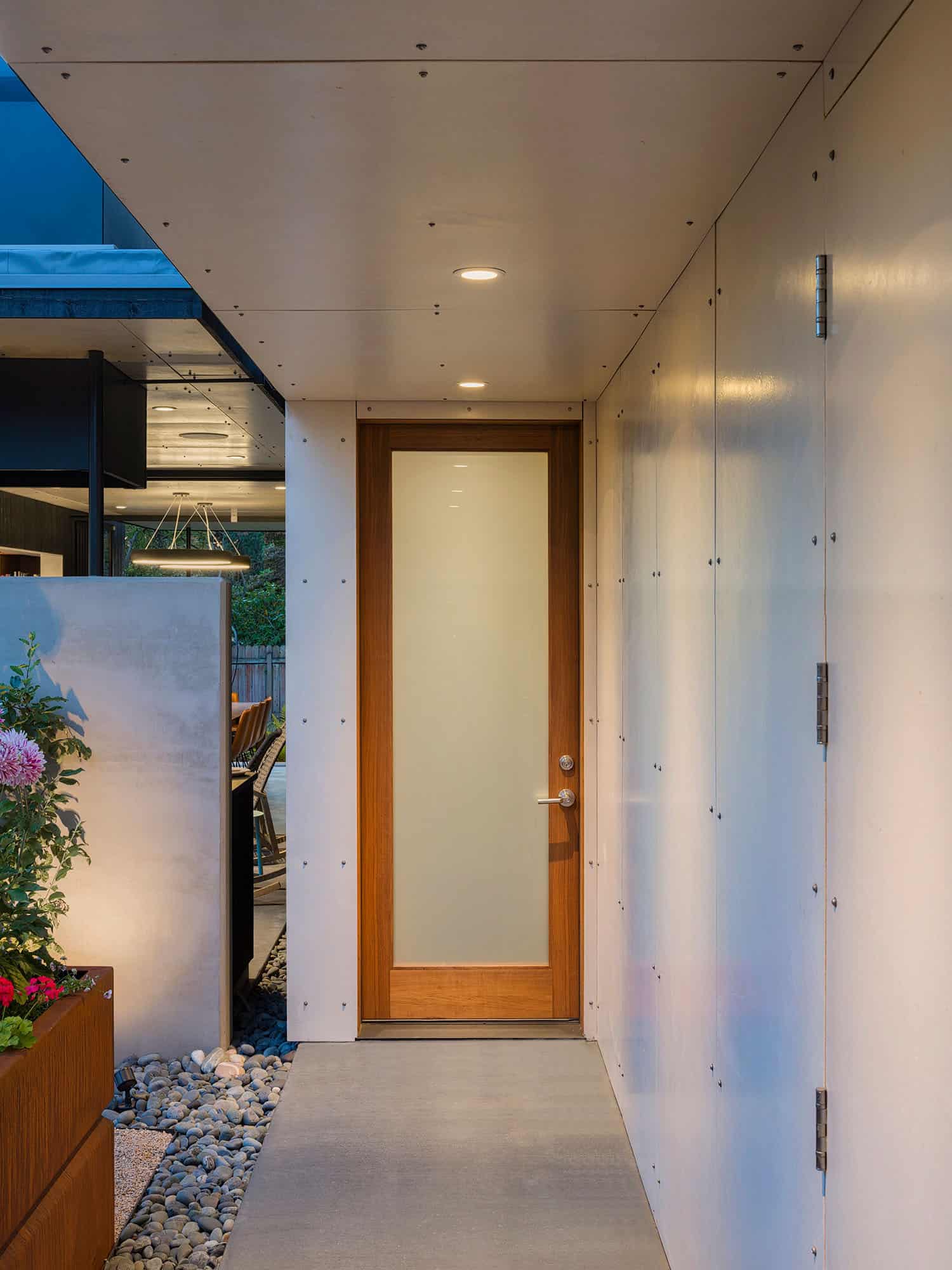
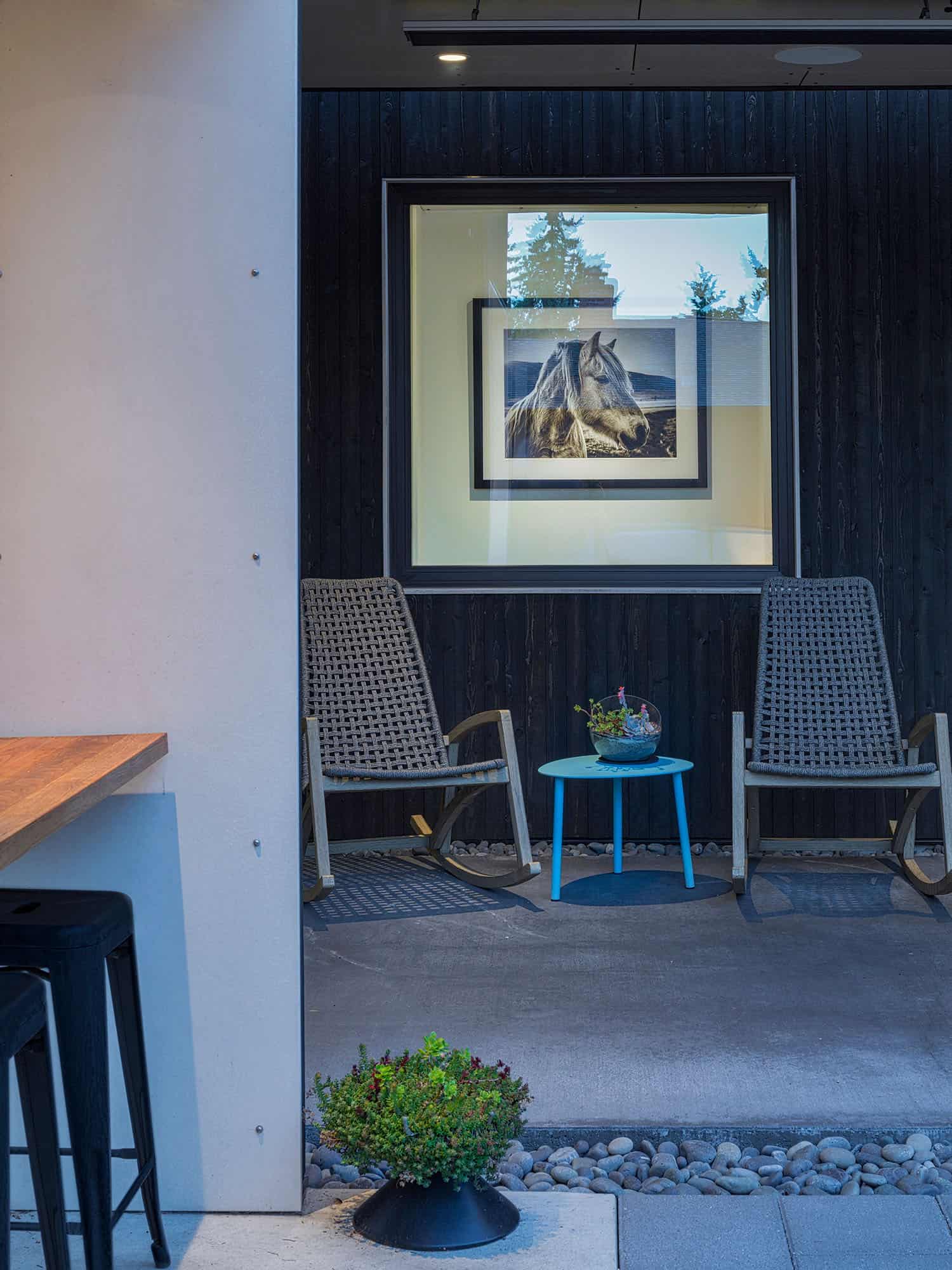
Natural black pine tar was used on the exterior cedar of this Seattle home to create a rough textured finish in contrast to the smooth white Viroc panels. Viroc’s integral color will never require painting. Corten steel throughout the project is maintenance-free and has a long life cycle. The goal of material selection was to minimize maintenance, thereby reducing costs and environmental impact.





PHOTOGRAPHER Sozinho Imagery




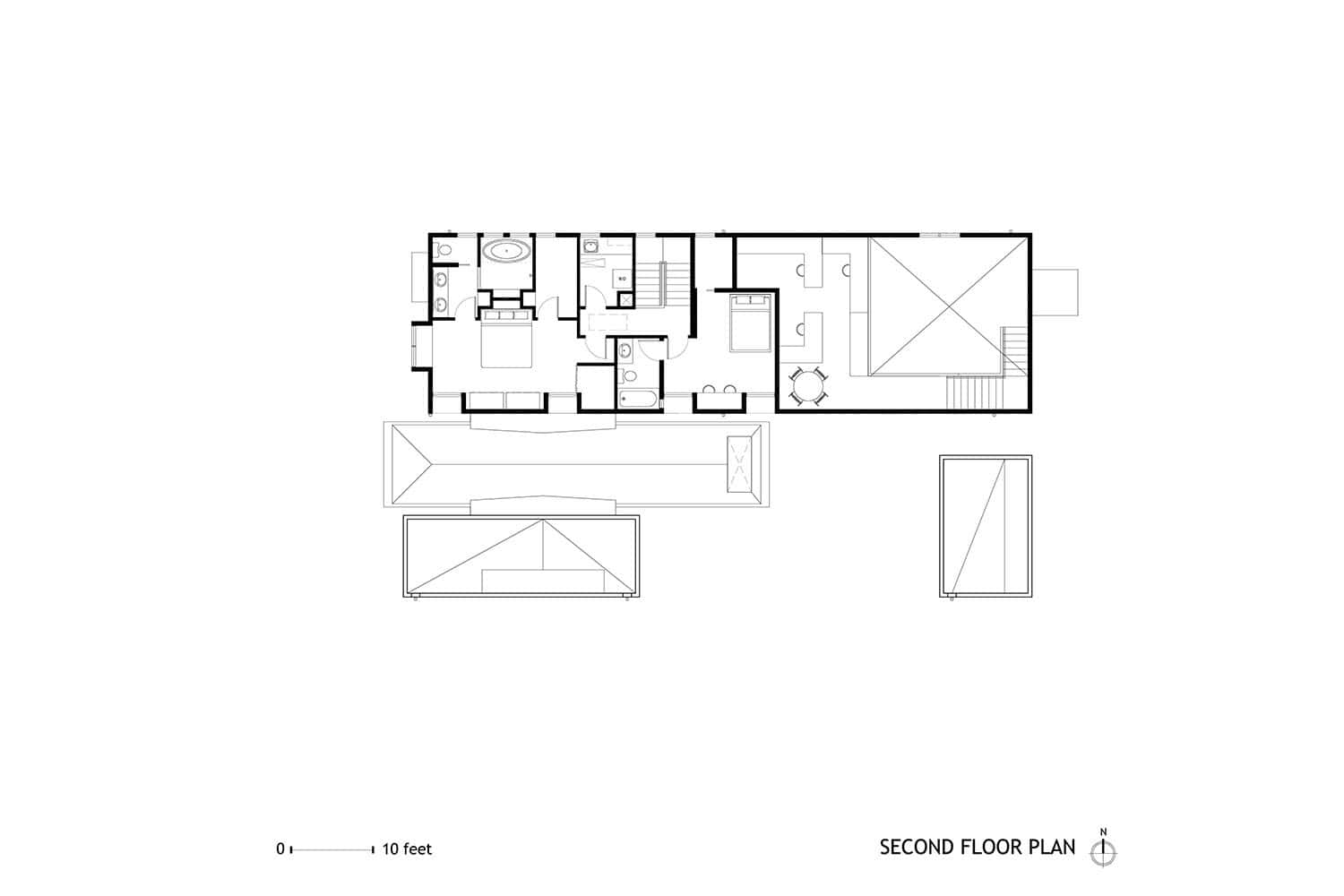
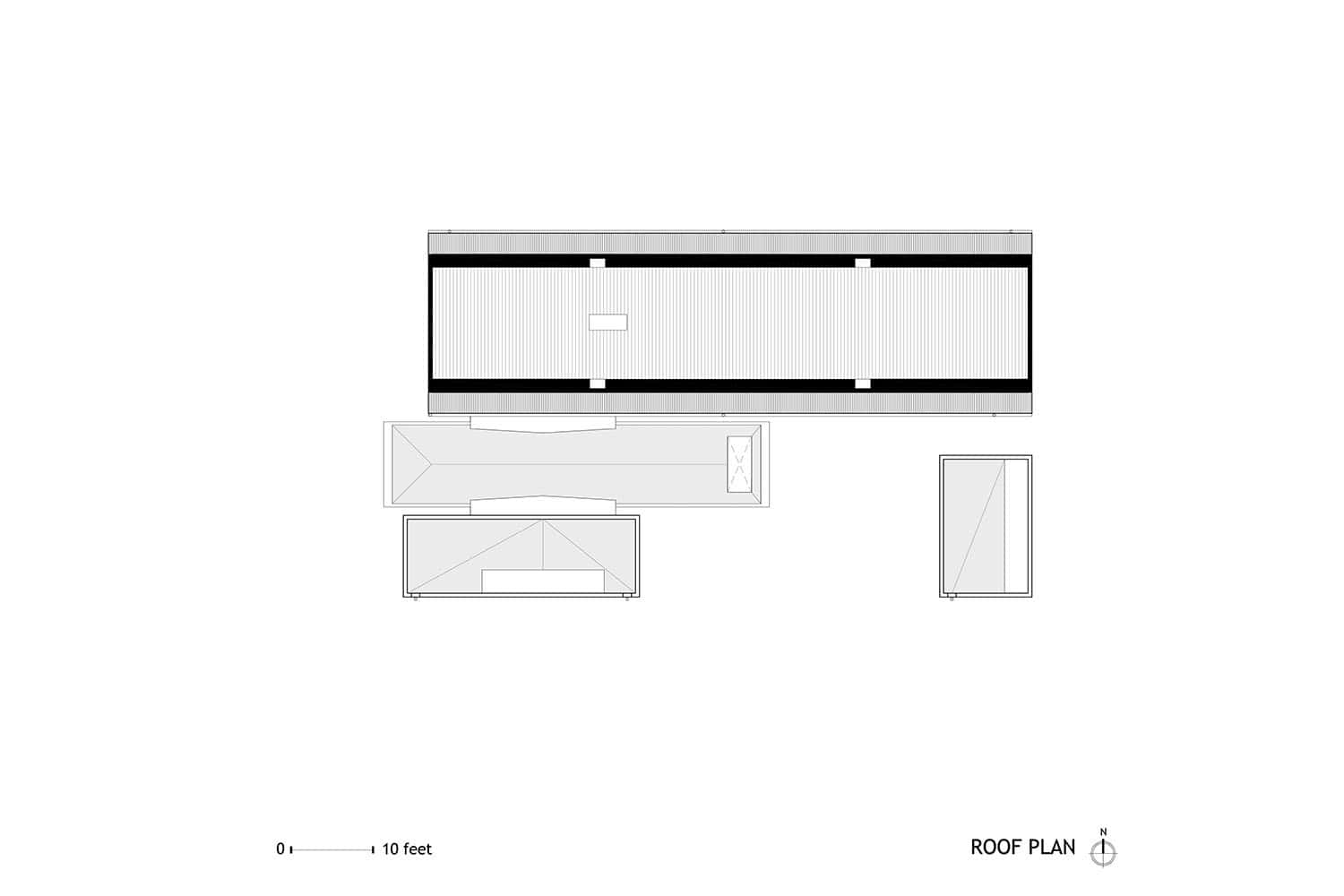

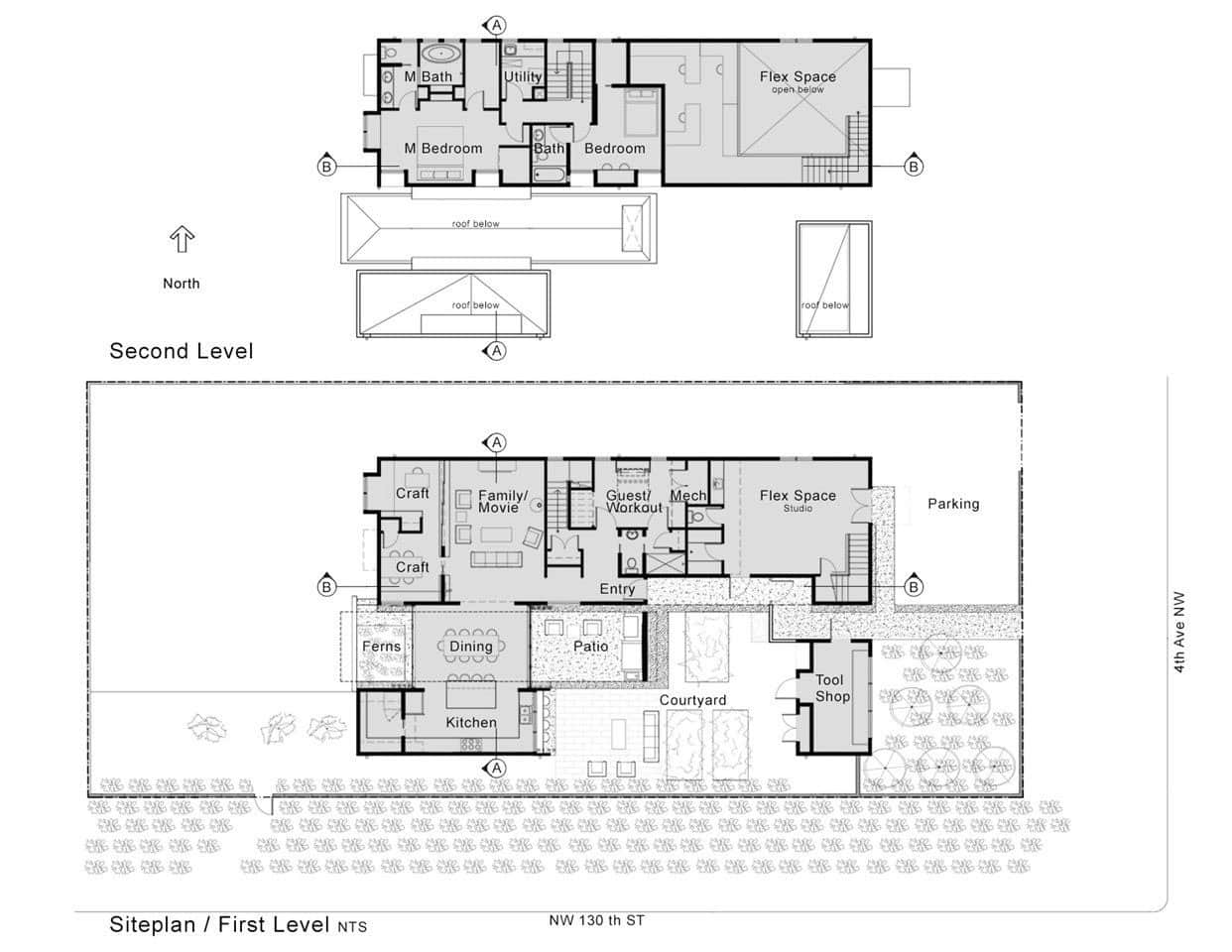


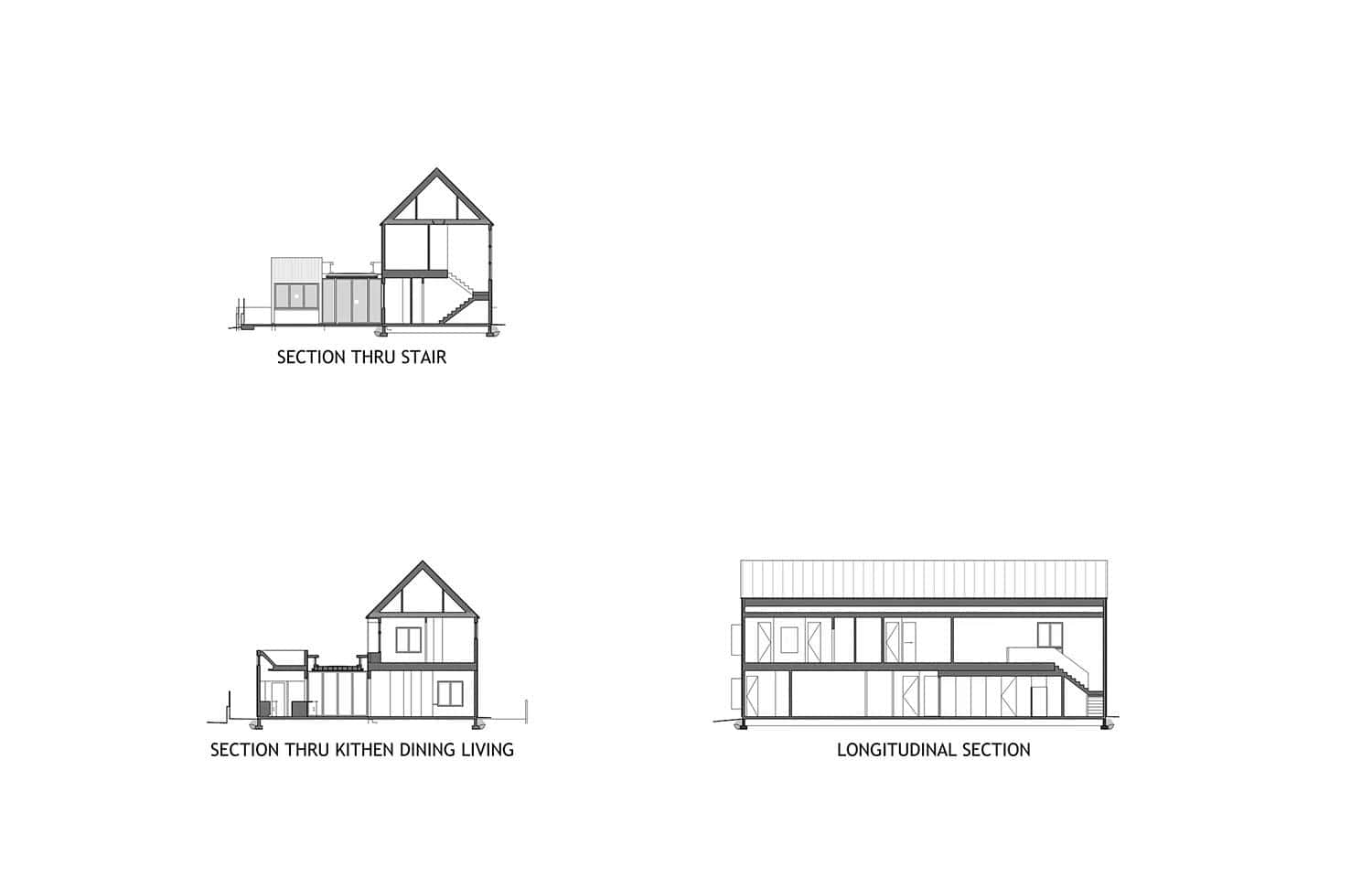
One Kindesign has received this project from our submissions page. If you have a project you would like to submit, please visit our submit your work page for consideration!


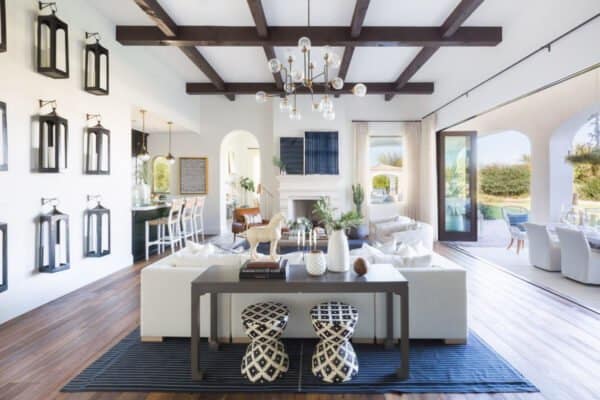
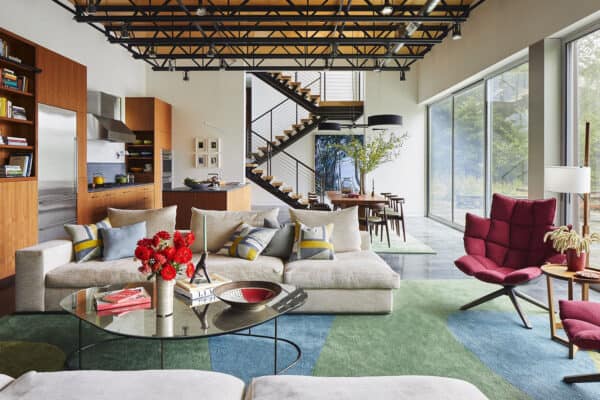
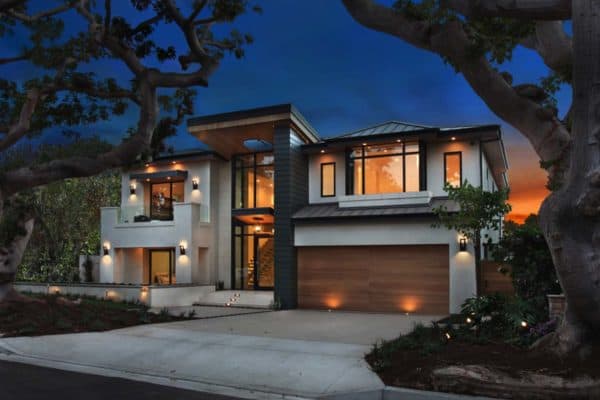


1 comment